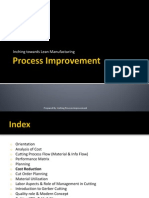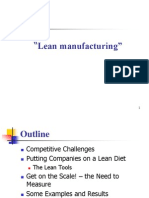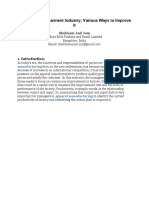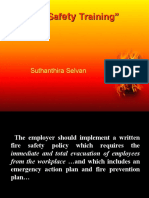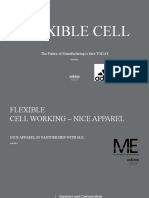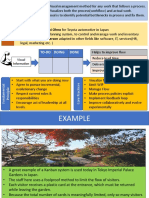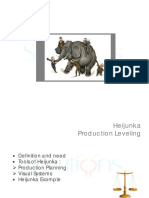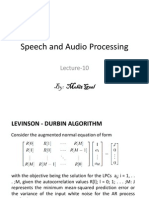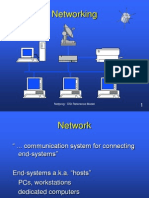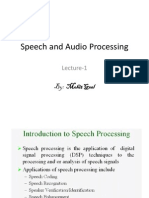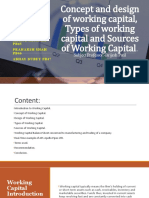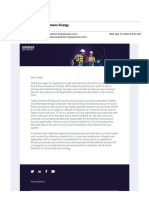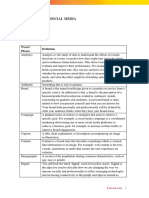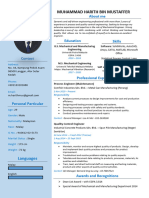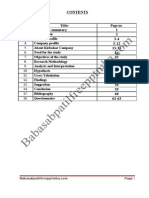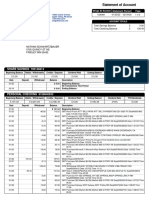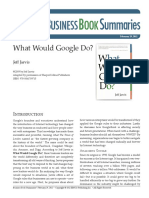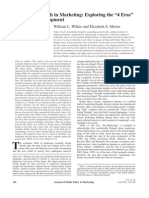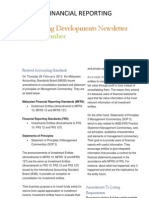Continuous Process Improvement
Unit V
�Vision of CPI
The Macro Vision Macro refers to the executive level of the institution. The Micro Vision Micro refers to all of the managers, faculty, and staff.
�Systems Principles - Systems Thinking
INPUTS
PERSON POWER
PROCESSES
OUTPUTS
CUSTOMERS
METHODS
EXTERNAL
ENVIRONMENT
Critical Process Necessary to Produce the Outputs
Products & Services
INTERNAL
FACILITIES & EQUIPMENT
SUPPLIES
MEASURES OF PERFORMANCE TIME; QUANTITY, QUALITY (Accuracy/ Fir for Use); COST; MANNER OF PERFORMANCE
A Contemporary Systems View
�Some important definitions
1.
2. 3.
Input: May be material, money, information, data, etc.
Output: May be information, products, service, etc. Process: It is the interaction of some combination of people, materials, equipment, method, measurement and the environment to produce an outcome such as product, service or an input to another person.
�5 Basic Ways to Define Improvement
Reduce Resources Reduce Errors Meet or exceed expectations Make the process safer Make the process more satisfying to the person doing it
�Methods to improve process
1. Jurans Triology (Planning / Control/Improvement) 2. The PDCA/ PDSA cycle
�Continuous Process Improvement Cycle
Phase 1 Identify the opportunity Phase 2 Analyze the Process ACT PLAN Phase 3 Develop the Optimal Solution DO
Phase 7Plan for the Future
Phase 6 Standardize the Solution
STUDY
Phase 5 Study the Results
Phase 4 Implementation
�4 primary Improvement Strategies
Repair Refinement Renovation Reinvention
All employee have the freedom to solve problem Break through improvements
�5 Types of problems associated
Compliance Occurs when a structured system having standardized inputs, processes and output is performing unacceptably from the users viewpoint. Unstructured It is similar to compliance except that they are not specified by standards.
�5 Types of problems associated
Efficiency When the system is performing unacceptably form the viewpoint of the owner or the operator Process Design Poor design of the process of formation of the components Product Design Poor product design
�Kaizen- The Japanese Word
Kaizen is a Japanese word for the philosophy that defines managements role in continuously encouraging and implementing small improvements involving everyone. It is the process of continuous improvement in small increments that make the process more efficient, effective, under control and adaptable.
�Kaizen- The Japanese Word
Improvements are usually accomplished at little or no expense without sophisticated techniques or expensive equipment. It focuses on simplification by breaking down complex processes into their sub-processes and then improving them.
�Kaizen Improvement focuses on
Value added and non-valued added work activities MUDA, which refers to the seven classification of waste:
Over production Delay Transportation Processing Inventory Wasted motion Defective parts
�Why are these classified as wastes?
Transportation
Each time a product is moved it stands the risk of being damaged, lost, delayed, etc. as
well as being a cost for no added value. Transportation does not make any transformation to the product that the consumer is willing to pay for. Inventory
Inventory, be it in the form of raw materials, work-in-progress (WIP), or finished goods, represents a capital outlay that has not yet produced an income either by the producer or for the consumer. Any of these three items not being actively processed to add value is waste.
�Why are these classified as wastes?
Motion
In contrast to transportation, which refers to damage to products and transaction costs associated with
moving them, motion refers to the damage that the production process inflicts on the entity that creates the product, either over time (wear and tear for equipment and repetitive stress injuries for workers) or during discrete events (accidents that damage equipment and/or injure workers).
Waiting/Delay
Whenever goods are not in transport or being processed, they are waiting. In traditional processes, a large part of an individual product's life is spent waiting to be worked on. Over-processing
Over-processing occurs any time more work is done on a piece than what is required by the customer.
This also includes using tools that are more precise, complex, or expensive than absolutely required.
�Why are these classified as wastes?
Over-production
Overproduction occurs when more product is produced than is required at that time by your
customers. One common practice that leads to this muda is the production of large batches, as often consumer needs change over the long times large batches require. Overproduction is considered the worst muda because it hides and/or generates all the others. Overproduction leads to excess inventory, which then requires the expenditure of resources on storage space and preservation, activities that do not benefit the customer. Defects
Whenever defects occur, extra costs are incurred reworking the part, rescheduling production, etc. This results in labor costs, more time in the "Work-in-progress". Defects in practice can sometimes double the cost of one single product. This should not be passed on to the consumer
and should be taken as a loss.
�Kaizen Improvement focuses on
Principles of motion study and the use of cell technology Principles of material handling and the use of one piece flow Documentation of standard operating system
�Kaizen Improvement focuses on
The 5S
Seiko (Proper arrangement) Seiton (orderliness) Seiketso (Personal Cleanliness) Seiso (Clean up) Shitsuke (Discipline)
�Kaizen Improvement focuses on
Visual management by means of visual displays that everyone in the plant can use for better communications. Just in Time principles to produce only the units in the right quantities at the right time and with the right resources
�Kaizen Improvement focuses on
POKA YOKE to prevent or detect errors Poka-yoke is a Japanese term that means "fail-safing" or "mistake-proofing". A poka-yoke is any mechanism in a lean manufacturing process that helps an equipment operator avoid (yokeru) mistakes (poka). Its purpose is to eliminate product defects by preventing, correcting, or drawing attention to human errors as they occur.
�Kaizen Improvement focuses on
Team Dynamics which includes problem solving, communication skills and conflict resolution.
�Re-engineering
It is the fundamental rethinking and radical redesign of business processes to achieve dramatic improvements in critical measures of performance.
�Six Sigma





